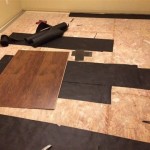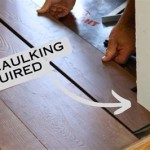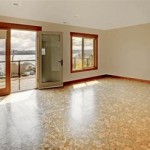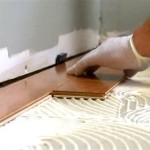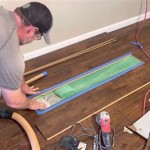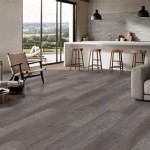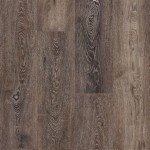The Definitive Guide To The Best Engineered Wood Flooring
Engineered wood flooring is a popular choice for homeowners who want the look of hardwood floors without the high price tag. It is made from a thin layer of real wood veneer that is bonded to a plywood or HDF (high-density fiberboard) core. This makes engineered wood flooring more stable and less likely to warp or buckle than solid hardwood floors.
When choosing engineered wood flooring, there are several factors to consider, including:
- Species: The species of wood used for the veneer will affect the look, durability, and cost of the flooring.
- Grade: The grade of the wood veneer will determine the amount of natural variation in the color and grain of the flooring.
- Finish: The finish of the flooring will protect it from wear and tear and will also affect the look of the floor.
- Installation: Engineered wood flooring can be installed over a variety of subfloors, including concrete, plywood, and radiant heat systems.
Once you have considered all of these factors, you can narrow down your choices and choose the best engineered wood flooring for your home.
Species
The species of wood used for the veneer will affect the look, durability, and cost of the flooring. Some of the most popular wood species used for engineered wood flooring include:
- Oak: Oak is a durable and versatile wood that is available in a wide range of colors and finishes.
- Maple: Maple is a light-colored wood that is known for its hardness and durability.
- Walnut: Walnut is a dark-colored wood that is known for its rich grain and luxurious appearance.
- Cherry: Cherry is a reddish-brown wood that is known for its beautiful grain and warm color.
The species of wood that you choose will ultimately depend on your personal preferences and budget.
Grade
The grade of the wood veneer will determine the amount of natural variation in the color and grain of the flooring. There are three main grades of engineered wood flooring:
- Select: Select grade flooring is made from the highest quality wood veneers and has the least amount of natural variation.
- Number 1: Number 1 grade flooring is made from good quality wood veneers and has a moderate amount of natural variation.
- Number 2: Number 2 grade flooring is made from lower quality wood veneers and has the most amount of natural variation.
The grade of flooring that you choose will affect the look of your floor and the price.
Finish
The finish of the flooring will protect it from wear and tear and will also affect the look of the floor. There are three main types of finishes for engineered wood flooring:
- Oil-based: Oil-based finishes are durable and easy to maintain. They give the floor a natural look and feel.
- Water-based: Water-based finishes are more environmentally friendly than oil-based finishes. They are also less durable, but they are easier to clean.
- Urethane: Urethane finishes are the most durable type of finish. They are also the most expensive.
The type of finish that you choose will depend on your personal preferences and budget.
Installation
Engineered wood flooring can be installed over a variety of subfloors, including concrete, plywood, and radiant heat systems. The most common installation method is to glue the flooring to the subfloor. However, you can also nail or staple the flooring down.
If you are installing the flooring yourself, it is important to follow the manufacturer's instructions carefully. Improper installation can void the warranty on the flooring.
Engineered Wood Flooring Benefits
Engineered wood flooring offers a number of benefits over solid hardwood floors, including:
- More stable: Engineered wood flooring is less likely to warp or buckle than solid hardwood floors because it is made with a plywood or HDF core.
- More durable: Engineered wood flooring is more durable than solid hardwood floors because it is made with a thicker wear layer.
- More affordable: Engineered wood flooring is more affordable than solid hardwood floors because it is made with less expensive materials.
- Easier to install: Engineered wood flooring is easier to install than solid hardwood floors because it can be glued or nailed to the subfloor.
Engineered wood flooring is a great choice for homeowners who want the look of hardwood floors without the high price tag. It is durable, stable, and easy to install.

Ultimate Guide To Engineered Timber Flooring Floorvenue

Best Engineered Wood Flooring Of 2024 Forbes Home

Engineered Timber Flooring Cost In Updated 2024 Floorvenue

A Guide To Engineered Wood Floors Carlisle Wide Plank

How To Lay Engineered Timber Floor Guide Fantastic Handyman Au

Best Engineered Hardwood Floor For Scratch Resistance Lifecore Flooring S

Pros Cons Of Engineered Timber Flooring Imagine Floors By Airstep

The 15 Best Engineered Wood Flooring Brands Reviews 2024 Floorings

The 15 Best Engineered Wood Flooring Brands Reviews 2024 Floorings

The Ultimate Guide To Wide Plank Flooring Mayriver
See Also
